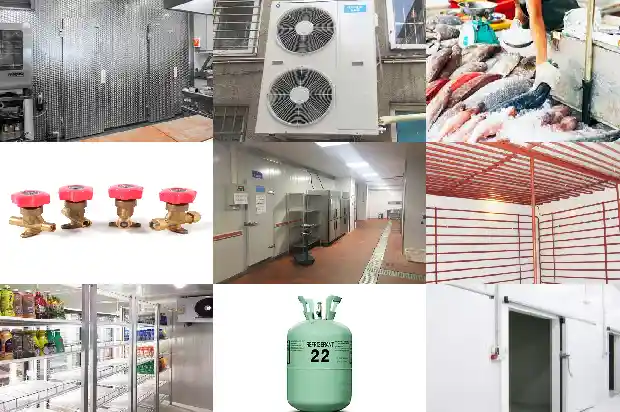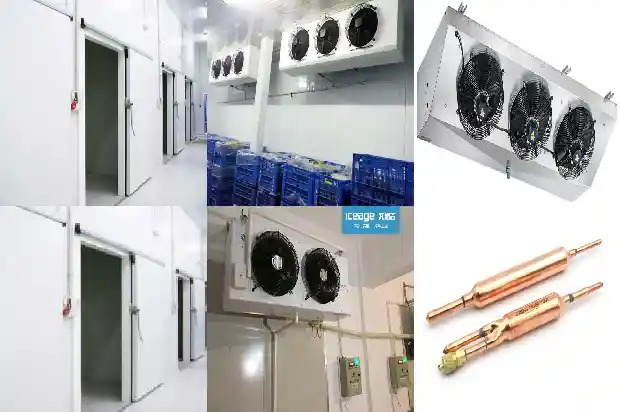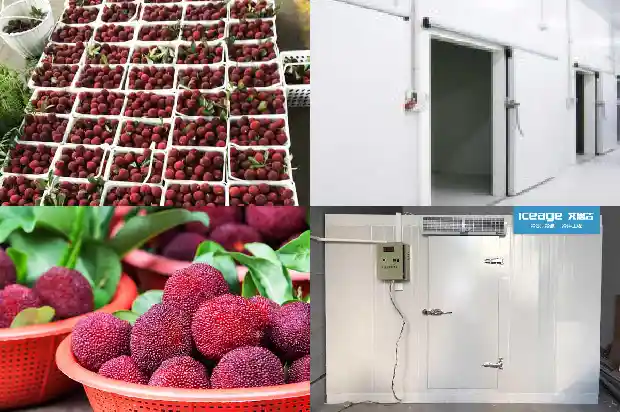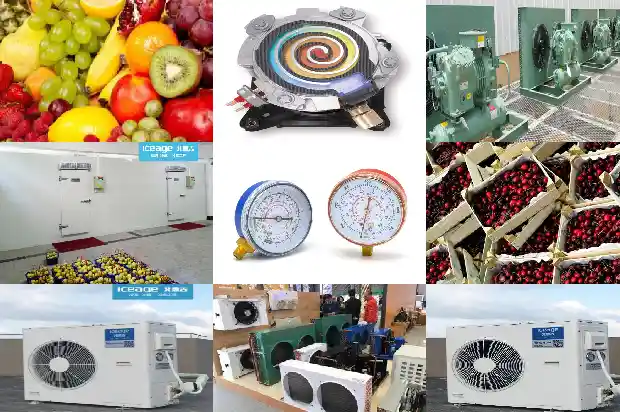Seamless Steel Pipe in Cold Storage Refrigeration Unit
2024-09-29
In cold storage refrigeration systems, the most commonly used pipeline materials are 20# carbon steel seamless steel pipes, copper tubes, 10# carbon steel seamless steel pipes, and 16Mn low-alloy steel pipes. Except for low-temperature and low-stress working conditions, the lower limits of service temperatures for (GB8163) 10# carbon steel seamless steel pipes, 20# carbon steel seamless steel pipes, and 16Mn low-alloy steel pipes are approximately -29°C, -20°C, and -40°C respectively. Copper tubes cannot be used for ammonia refrigeration system refrigeration pipelines. For fluorine systems, when the pipe diameter of the device is below 20mm, copper tubes are generally used. When the pipe diameter is above 25mm, seamless steel pipes can be used.
Among them, 10# carbon steel seamless steel pipes are applied under working conditions where the warehouse temperature is lower than -29°C. Only some pipe diameters meet the low-temperature and low-stress working conditions. 20# carbon steel seamless steel pipes can be used for temperatures lower than -20°C and meet the low-temperature and low-stress working conditions. 16Mn low-alloy steel pipes are generally used as pipeline materials for carbon dioxide refrigeration systems and ultra-low temperature cold storage refrigeration systems.
According to national standards, any steel material with openings at both ends and a hollow cross-section, and a relatively large ratio of its length to the cross-sectional perimeter can be called a steel pipe.
Seamless steel pipes are classified by material into ordinary carbon steel pipes, high-quality carbon structural steel pipes, alloy structural pipes, alloy steel pipes, bearing steel pipes, and bimetallic composite pipes, coated pipes, etc. to save precious metals and meet special requirements. Seamless steel pipes can be further divided into hot-rolled pipes, cold-rolled pipes, cold-drawn pipes, and extruded pipes.
When selecting, the material, specification, model, and connection method of the pipe should meet the requirements of the operating conditions (working pressure, working temperature, etc.). When ordering, it is necessary to indicate the standard number of the pipe, product name, steel grade, size specification, quantity (weight or length), delivery status, and other requirements.
Before pipeline installation, remove the oxide scale, debris, and rust inside the pipe and use it in time after cleaning it thoroughly. When not in use temporarily, cover the pipe openings at both ends with adhesive tape or pipe caps to prevent dust, debris, or moisture from entering. Pipeline cleaning can be done by mechanical cleaning with brushes or chemical cleaning with chemical solutions.
For pipe cutting, mechanical cutting or oxyacetylene flame processing cutting can be used. Pipes with a nominal diameter of 50 are generally cut with a cutting machine.
After pipeline installation is completed, use dry compressed air or nitrogen to perform segmented purging and sewage discharge on the pipeline. The purging sequence should be carried out in turn according to the main pipe and branch pipes. Then perform pressure testing for leak detection, vacuum pumping experiment, painting, and insulation. The airtightness test of the pipeline can be carried out together with the airtightness test of the entire device.
The main faults that often occur in pipelines are flange leaks, weld leaks, and corrosion perforation of the pipes themselves. During daily use, operators must use the pipelines in accordance with operating procedures and conduct regular patrol inspections. Mainly check the following aspects:
a) Whether the in-use pipeline has over-temperature, over-pressure, over-load, and over-cooling;
b) Whether there is abnormal vibration in the pipeline and abnormal sound inside the pipeline;
c) Whether there is liquid hammer in the pipeline;
d) Whether the operation of pipeline safety protection devices is normal;
e) Whether the insulation layer is damaged;
f) Whether the supports and hangers are abnormal.
Whether it is a design unit, construction unit, or user unit, they all need to comply with the relevant national regulations on safety management of refrigeration pressure pipelines, establish and improve safety management systems, and operate and operate in a standardized manner as required.
Among them, 10# carbon steel seamless steel pipes are applied under working conditions where the warehouse temperature is lower than -29°C. Only some pipe diameters meet the low-temperature and low-stress working conditions. 20# carbon steel seamless steel pipes can be used for temperatures lower than -20°C and meet the low-temperature and low-stress working conditions. 16Mn low-alloy steel pipes are generally used as pipeline materials for carbon dioxide refrigeration systems and ultra-low temperature cold storage refrigeration systems.
According to national standards, any steel material with openings at both ends and a hollow cross-section, and a relatively large ratio of its length to the cross-sectional perimeter can be called a steel pipe.

Seamless steel pipes are classified by material into ordinary carbon steel pipes, high-quality carbon structural steel pipes, alloy structural pipes, alloy steel pipes, bearing steel pipes, and bimetallic composite pipes, coated pipes, etc. to save precious metals and meet special requirements. Seamless steel pipes can be further divided into hot-rolled pipes, cold-rolled pipes, cold-drawn pipes, and extruded pipes.


When selecting, the material, specification, model, and connection method of the pipe should meet the requirements of the operating conditions (working pressure, working temperature, etc.). When ordering, it is necessary to indicate the standard number of the pipe, product name, steel grade, size specification, quantity (weight or length), delivery status, and other requirements.
Before pipeline installation, remove the oxide scale, debris, and rust inside the pipe and use it in time after cleaning it thoroughly. When not in use temporarily, cover the pipe openings at both ends with adhesive tape or pipe caps to prevent dust, debris, or moisture from entering. Pipeline cleaning can be done by mechanical cleaning with brushes or chemical cleaning with chemical solutions.
For pipe cutting, mechanical cutting or oxyacetylene flame processing cutting can be used. Pipes with a nominal diameter of 50 are generally cut with a cutting machine.

After pipeline installation is completed, use dry compressed air or nitrogen to perform segmented purging and sewage discharge on the pipeline. The purging sequence should be carried out in turn according to the main pipe and branch pipes. Then perform pressure testing for leak detection, vacuum pumping experiment, painting, and insulation. The airtightness test of the pipeline can be carried out together with the airtightness test of the entire device.
The main faults that often occur in pipelines are flange leaks, weld leaks, and corrosion perforation of the pipes themselves. During daily use, operators must use the pipelines in accordance with operating procedures and conduct regular patrol inspections. Mainly check the following aspects:
a) Whether the in-use pipeline has over-temperature, over-pressure, over-load, and over-cooling;
b) Whether there is abnormal vibration in the pipeline and abnormal sound inside the pipeline;
c) Whether there is liquid hammer in the pipeline;
d) Whether the operation of pipeline safety protection devices is normal;
e) Whether the insulation layer is damaged;
f) Whether the supports and hangers are abnormal.
Whether it is a design unit, construction unit, or user unit, they all need to comply with the relevant national regulations on safety management of refrigeration pressure pipelines, establish and improve safety management systems, and operate and operate in a standardized manner as required.
Related Articles
- Differences Between Steel Structure Cold Storages and Multi-story Civil Engineering Cold Storages
- Technical Features and Quality Judgment of Stainless Steel Cold Storage Panels
- Instructions for Welding and Drainage in the Installation of Refrigeration Equipment Pipelines
- Detailed Explanation of HVAC Pipeline Integration and Pipe Shaft Layout
- Oxyacetylene Welding Operation Method for Refrigeration Pipes
- On the maintenance and inspection of external insulation layers of pipes in refrigeration devices
- Installation and Oil Return Precautions for Refrigeration Equipment Pipelines
- What Are the Common Reasons for Difficulties in Cooling a Cold Storage?
- Introduction to Inspection and Handling Methods for Refrigerant Leak in Cold Storage
- How to Resolve the Scuffing Issue of Cold Storage Compressors
- What is the Correct Operation Method of the Distribution Box during Cold Storage Installation?
- Reasons for Frost Formation in Cold Storage and Defrosting Methods
- What Are the Differences Between R22 and R404A Cold Storage Systems?
- Maintenance Methods for Small Modular Cold Storage Failures
- What Vacuum Requirements Do Cold Storage Equipment Have?
- What Issues Should Be Noted in Cold Storage Installation and Construction?
- Common Malfunctions in the Operation of Cold Storage
- What Special Requirements are There for the Installation of Tea Cold Storage?
